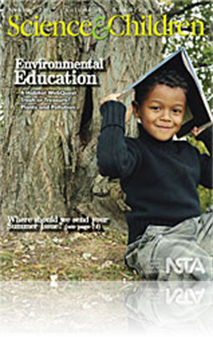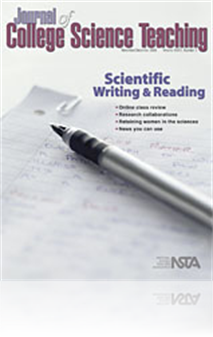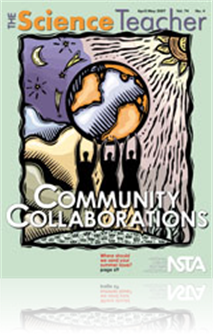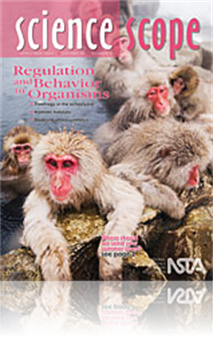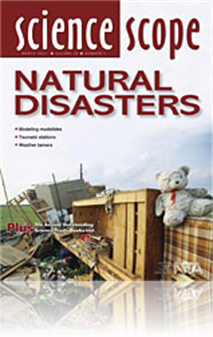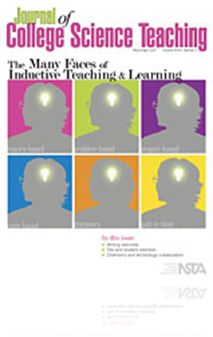All Resources
Journal Article
Most children know they should not pollute but have never considered why. One elementary school teacher creates a lesson for third- through fifth-grade students that makes the connection concrete. In the lesson, students consider the possible effects...
Journal Article
Methods and Strategies: The Teaching-With-Analogies Model
Teachers often use analogies and are unaware of it—they are using them automatically. Whenever they begin an explanation with “It’s just like…,” “It’s similar to…,” or “Think of it this way…,” they are using an analogy to expl...
Journal Article
It’s no secret that many school programs don’t give children enough opportunity to explore the natural world—i.e., to “mess about” and to have firsthand experience with nature and animals. Not so at the Muscota New School in New York City! ...
Journal Article
The WebQuest is a four-step process integrated at appropriate points in the Animal Studies unit. Through the WebQuest, students create a series of habitat maps that build on the knowledge gained from conducting the various activities of the unit. The...
Journal Article
Editor's Note: Looking at Environmental Education
Science education must prepare students to make informed personal and political decisions. Many of those decisions will revolve around issues of the environment. We are drenched daily in reports about alarming environmental trends. The learning envi...
Journal Article
Ask the Experts—April/May 2007
The experts address the following question in this month’s column: What color is the blood in a person’s veins? I’ve heard it described as “blue,” but it looks to me to be dark red, as it appears when blood is drawn during a lab test....
Journal Article
Science Sampler: The DEP saves the beans—A Performance assessment task for acid rain
Using performance assessment tasks allows students to demonstrate conceptual understanding of the important ideas of science, use scientific tools and processes, apply understanding of ideas to solve new, draw on what was learned to form explanations...
Journal Article
Idea Bank: Learning Through Stories
While studying gas laws, high school chemistry students at Unionville High School in Kennett Square, Pennsylvania, created children’s books about the properties of gases, geared toward ages 8-12, to display their understanding of the science conten...
Journal Article
The Early Years: The Sun's Energy
Understanding the connection between the Sun’s energy and sustaining life is difficult for preschoolers, but learning about these concepts through both long and short-term activities captures children’s short attention spans. Activities such as ...
Journal Article
Fires, Floods, & Hurricanes: Is ENSO to Blame?
Scientists have associated the El Niño/Southern Oscillation (ENSO) phenomenon with extreme climate events such as flooding in California, droughts in Australia, fires in Indonesia, and increased hurricane activity in the Atlantic Ocean. Because most...
Journal Article
Science Shorts: Energy in Motion
Children experience forces at work while on the playground, in gymnasiums, and in toy stores. Scooters, baseball bats, basketballs, and jump ropes all need pushes or pulls to make them move. When objects change shape as they are pushed or pulled, we ...
Journal Article
Commentary: The Cost of Teacher Turnover in Math and Science
Personnel turnovers can create instability for students, schools, and school districts. What are the costs of these changes? What are the causes of these changes? What information can research contribute to understanding the situation? In October 200...
Journal Article
The Many Faces of Inductive Teaching and Learning
Science courses are traditionally taught deductively. The instructor first teaches students relevant theory and mathematical models, then moves on to textbook exercises, and eventually—maybe—gets to real-world applications. Often the only motivat...
Journal Article
Tech Trek: In the eye of all beholders
Save for the subject of art perhaps, the teaching of no other discipline in K-12 schools is more reliant on vision than science. In fact, the core of science study involves observation in a controlled environment and the use of labs for observing nat...
Journal Article
Assistive Technology in the Inclusive Science Classroom
Assistive Technology (AT) can be any item, piece of equipment, or teacher-made product that is designed to improve a student’s functional capability or help a student succeed in accessing the general education curriculum. Lahm and Morrissette (1994...



